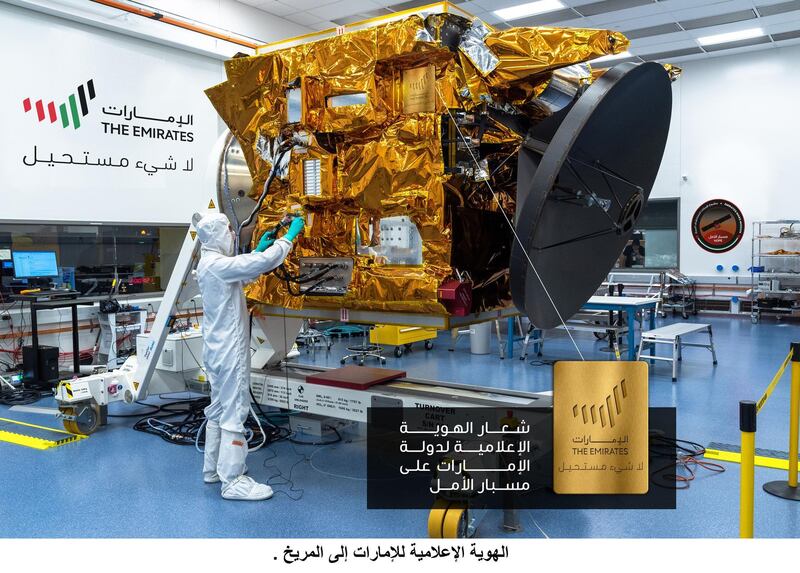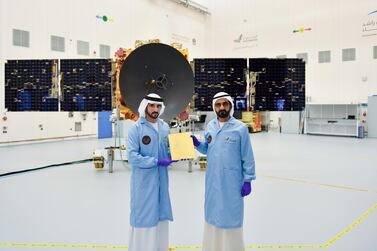The UAE’s Hope spacecraft could provide breakthrough data on why Mars' ancient river systems dried up, a leading Nasa scientist has claimed.
Dr Jim Rice said the high-altitude positioning of the Emirates Mars Mission probe could help solve many of the Red Planet’s key mysteries.
Currently, there are six relatively low-orbit spacecraft from Europe, India and United States missions circling Mars.
But when Hope launches in July this year, it will be placed in an elliptical orbit of between 22,000 km and 44,000km from the planet’s surface.
Scientists hope the additional height will allow the probe to retrieve critical data on Mars’ temperature as well as other weather conditions.
“The others [probes], such as the Mars Reconnaissance Orbiter, the European Trace Gas Orbiter, the Nasa MAVEN mission and any previous ones dating back to the 1970s were low-orbit missions,” said Dr Rice, geology team leader of the Mars Exploration Rover Project at Nasa.
“They were primarily trying to get high-resolution images of the surface. For weather satellites, it’s best to be placed much higher up, which is the goal for the Hope mission.”
The UAE’s Hope probe is expected to launch mid-July from Japan’s Tanegashima Space Centre, sited on a small island in the far south of the country.
Once in orbit, it will make a full circle of Mars every 55 hours, far longer than existing spacecraft.
The Mars Reconnaissance Orbiter currently takes 112 minutes to complete the loop, while Trace Gas Orbiter takes 120 minutes and the MAVEN takes four and a half hours. This is because each are far closer to the surface of the Red Planet.
Speaking to The National last week, Dr Rice said scientists were hoping new, in-depth atmospheric data might shed light on what caused Mars' desolate state.
Experts believe liquid water once existed on its surface, evidenced by the detection of specific minerals as well as prominent geological features.
“Hope will get to see the entire planet and can observe and study the whole atmosphere at different times of the day,” Dr Rice said.
“Geology has always been the main thrust of all previous missions, but Mars hasn’t had many missions with weather as a focus. The Hope mission offers that.”
“We see all of the dried river beds, we know there were lakes on Mars, maybe even oceans.
“Those things can’t exist today because the atmospheric pressure is too small. The atmosphere must have been thicker [in the past] to allow liquid water to be present on the surface.
“Understanding the climate of Mars is one of the big questions, and when and what caused that change.
“Any information we can get can help us fill in the gaps in our knowledge base.”
When Hope reaches its orbit, three on board instruments - an infrared and ultraviolet spectrometer, and a camera - will study the planet.
In particular, the equipment will focus on how major dust storms on its surface are leading to hydrogen gas being leaked into higher levels of its atmosphere.
It is this movement of hydrogen which experts believe could be contributing to the thinning of Mars’ atmosphere, causing river beds to dry up.
Before Hope can begin collecting data, however, scientists first have to place the probe in its correct orbit.
Dr Rice described that task as “very difficult”, with about 45 per cent of Mars missions, whether they involve landing craft or orbiters, resulting in failure.
Today, India is so far the only country that has successfully placed a probe in orbit around the planet on its first attempt.
“It will be a major accomplishment if the mission is successful,” Dr Rice said. “Even flying by the orbit has been difficult.
“Mars is a hard place and it is a graveyard of the solar system. Most of the failures there are by the Russians, and the Americans have had some.”








